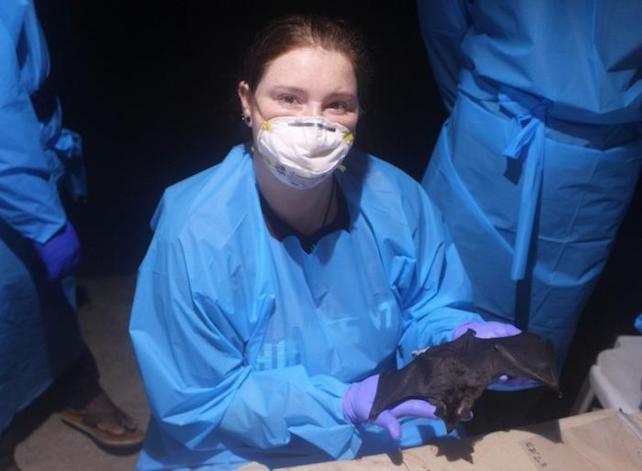Vampire bats have a history of expanding their range as climates change, researchers report in a new study, supporting concerns about further northward expansion due to human-induced global warming.
The findings suggest warming climates in southern regions of the US may soon lure vampire bats to move in, some potentially carrying diseases like rabies that could spread to wildlife, livestock or, in rare cases, people.
That concern is based on precedent, notes biologist and lead author Paige Van de Vuurst from Virginia Polytechnic Institute and State University.
“What we found was that the distribution of vampire bats has moved northward across time due to past climate change, which has corresponded with an increase in rabies cases in many Latin American countries,” Van de Vuurst says.
There are three species of vampire bats living in the wild today, all of which inhabit only Mexico, Central and South America, and a few Caribbean islands.
Fossil evidence indicates vampire bats enjoyed a wider distribution in prehistoric times, including extant species as well as some now-extinct “giant” vampire bats.
The new study focuses on the common vampire bat (Desmodus rotundus), which ranges from northern Mexico through all of Central America and most of South America. It thrives in a variety of different habitats and elevations, from sea level up to 3,600 meters in the Andes.
Van de Vuurst and her colleagues report that due to climate change, parts of the US will also begin to offer a viable home for common vampire bats by the middle of the century.
Their research suggests the bats have historically spread to new areas seeking stabler, more temperate habitats, in response to greater seasonal temperature extremes in their existing ranges.
While the arrival of vampire bats alone wouldn’t be cause for alarm, their potential to transmit diseases – namely rabies – might be.
This is mainly a concern regarding cattle and other livestock, which already risk contracting rabies from vampire bats in their current range. Previous research has found the bats indirectly kill hundreds of cows per year in some countries by infecting them with the deadly virus.

While vampire bats don’t generally seek blood from humans, the risk isn’t zero, experts say, especially given the potential for rabies to alter an animal’s typical behavior.
The concern centers more on the US livestock industry, since incoming vampire bats are far likelier to bite animals like cows and horses than humans.
The new study is part of a broader effort by researchers to identify exactly where vampire bats live today, and to track their movement within that range and beyond.
Using records of the bats’ ranges from 1901 to 2019, the new study sought to clarify how various geographic and environmental factors influence the shift in vampire bat range and rabies spillover.
Ongoing work aims to focus more on Colombia’s bat diversity, which ranks among the highest in the world, reportedly second only to Indonesia.
“Colombia is a mega-diverse country, making it a perfect natural laboratory,” says disease ecologist Luis Escobar, assistant professor in the Department of Fish and Wildlife Conservation at Virginia Tech’s College of Natural Resources and Environment.
With the help of ecological niche modeling, the researchers’ data has already revealed how previous changes in climate have corresponded with range shifts among vampire bats.
And thanks to a trove of regional rabies data, the researchers also shed light on the relationship between climate change and distribution of rabies reservoirs over time.
These findings help link climate change with range shift in vampire bats, they report, “in tandem with continental-level changes in the risk of RABV [rabies virus] spillover from wildlife to domestic animals.”
The study also offers a rare retrospective look at climate-driven range shifts in a bat reservoir, along with the pathogen it transmits, “which until now has been more commonly associated with future-climate simulation-based models,” the researchers write.
The study was published in Ecography.
